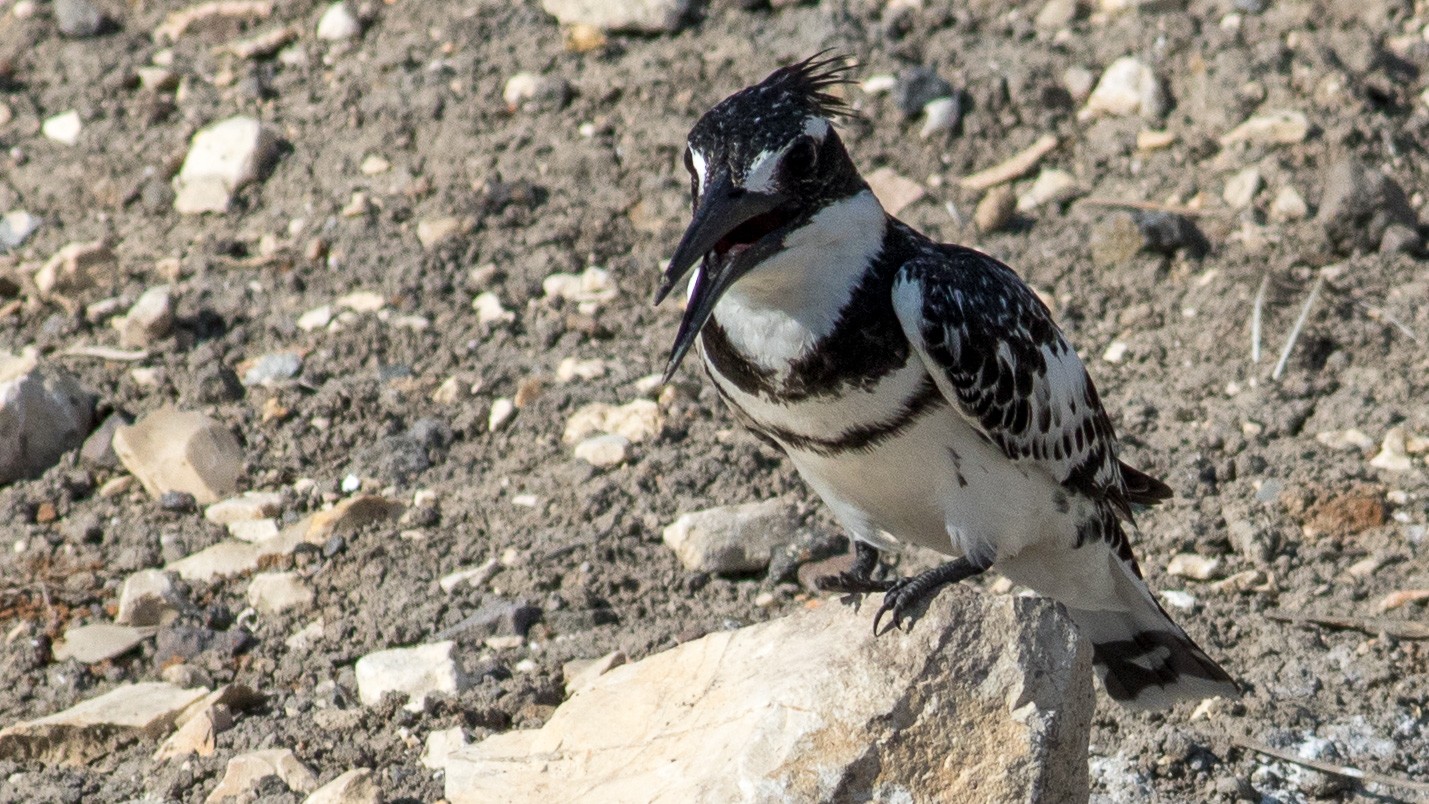Pied Kingfisher
A species of Pied Kingfishers Scientific name : Ceryle rudis Genus : Pied Kingfishers
Pied Kingfisher, A species of Pied Kingfishers
Botanical name: Ceryle rudis
Genus: Pied Kingfishers
Content
Description General Info
 Photo By מינוזיג - MinoZig , used under CC-BY-SA-4.0 /Cropped and compressed from original
Photo By מינוזיג - MinoZig , used under CC-BY-SA-4.0 /Cropped and compressed from original Description
This is a medium-sized kingfisher, about 25 cm (9.8 in) long with a white with a black mask, a white supercilium and black breast bands. The crest is neat and the upperparts are barred in black. Several subspecies are recognized within the broad distribution. The nominate race is found in sub-Saharan Africa, extending into West Asia. The subspecies syriacus is a larger northern bird similar to the nominate subspecies (following Bergmann's rule). Subspecies leucomelanura is found from Afghanistan east into India, Thailand and Southeast Asia. The subspecies travancoreensis of the Western Ghats is darker with the white reduced. The subspecies C. r. insignis is found in Hainan and southeastern China and has a much larger bill. Males have a narrow second breast-band while females have a single broken breast band. 
Size
25 cm
Colors
Black
White
Life Expectancy
4 years
Nest Placement
Cavity
Feeding Habits
Pied Kingfisher primarily consumes fish, crustaceans, and aquatic insects like dragonfly larvae. It employs a hover-and-dive approach to snatch prey and has unique adaptations that allow it to consume smaller catches mid-flight, enabling it to forage over vast waters without the need for perches.
Habitat
Pied Kingfisher favors aquatic environments including freshwater bodies like lakes and rivers, coastal regions such as estuaries and mangroves, and adapts to human-disturbed areas, often occupying dams and agricultural fields. They use waterside locations as vantage points for hunting, ranging from natural vegetation to man-made structures. The species has a wide elevation range but typically shuns dense swamps and large floodplains.
Dite type
Piscivorous
General Info
Feeding Habits
Bird food type
Behavior
When perched the pied kingfisher often bobs its heads up and down and will sometimes raise its tail and flick it downwards. It calls often with sharp chirruk chirruk notes. Unlike some kingfishers, it is quite gregarious, and forms large roosts at night. 
Distribution Area
It is common throughout sub-Saharan Africa and southern Asia from Turkey to India to China. It is resident, and most birds do not migrate, other than short-distance seasonal movements. In India it is distributed mainly on the plains and is replaced in the higher hills of the Himalayas by the crested kingfisher (Megaceryle lugubris). The pied kingfisher is estimated to be one of the three most numerous kingfishers in the world; the other two are the common kingfisher and collared kingfisher. It is a noisy bird, making it hard to miss. 
Species Status
Not globally threatened.